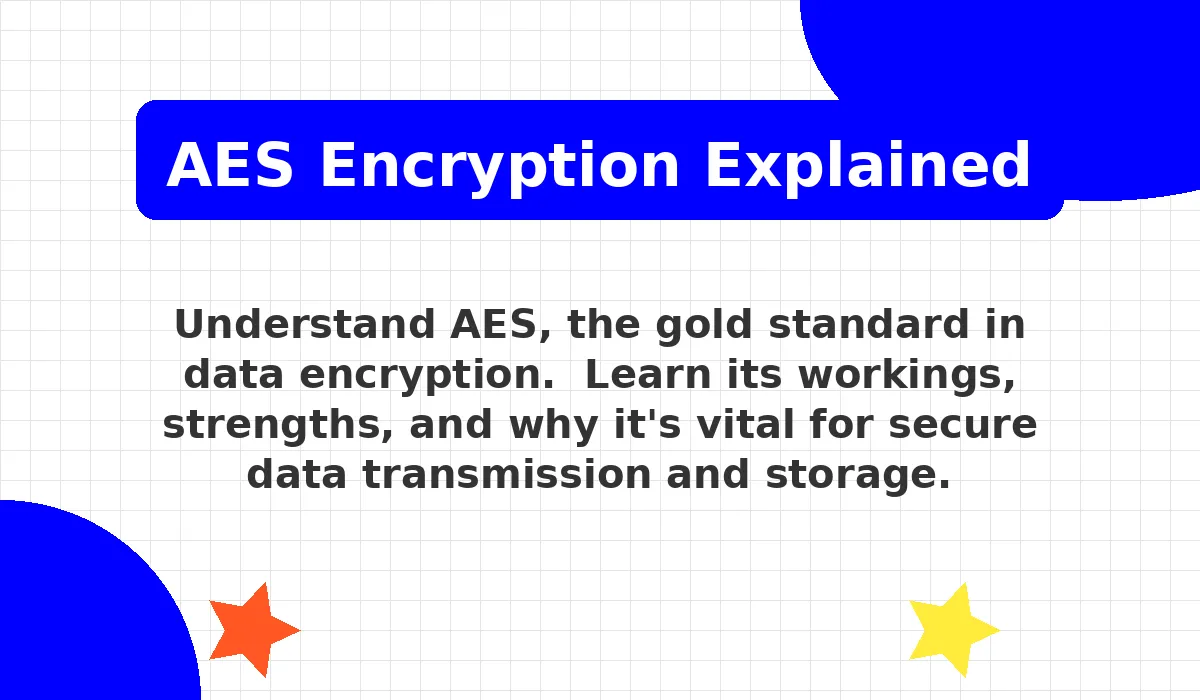AES Full Form – Advanced Encryption Standard Explained

AES Full Form – Advanced Encryption Standard Explained
Introduction:
In the digital age, data security is paramount. Protecting sensitive information from unauthorized access is crucial, and strong encryption is the cornerstone of this protection. One of the most widely used and trusted encryption methods is the Advanced Encryption Standard (AES), often referred to by its full form. This blog post will delve into the details of AES, explaining its workings, security features, and applications.
What is AES? Understanding the Advanced Encryption Standard
AES, or the Advanced Encryption Standard, is a symmetric-key encryption algorithm. This means it uses the same cryptographic key to encrypt and decrypt data. Unlike asymmetric encryption (like RSA), which uses separate keys, AES is faster and more efficient, making it ideal for encrypting large amounts of data. The “Advanced” in its name reflects its status as the successor to the Data Encryption Standard (DES), which was deemed insecure by modern standards.
AES Key Sizes and Security Levels
AES offers three different key sizes:
- AES-128: Uses a 128-bit key.
- AES-192: Uses a 192-bit key.
- AES-256: Uses a 256-bit key.
The larger the key size, the more computationally difficult it is to crack the encryption, leading to a higher level of security. AES-256 is generally considered the most secure option, offering a virtually unbreakable level of protection for most applications. The security of AES lies in the complexity of its mathematical operations and the enormous number of possible key combinations.
How Does AES Encryption Work? A Simplified Explanation
AES operates through a series of rounds, the number of which depends on the key size. Each round involves several transformations, including:
- Byte Substitution: Replacing each byte with another according to a lookup table (S-box).
- Shift Rows: Shifting the bytes in each row of the state matrix.
- Mix Columns: Performing a mathematical operation on the columns of the state matrix.
- Add Round Key: XORing the state matrix with a round key derived from the main encryption key.
These steps are repeated multiple times, creating a complex transformation of the input data. The final round omits the Mix Columns step. The exact details are highly technical, involving advanced mathematical concepts like finite field arithmetic.
AES Applications: Where is it Used?
AES is ubiquitous in modern technology, used to secure a wide array of data:
- Data at Rest: Protecting files stored on hard drives, SSDs, and cloud storage.
- Data in Transit: Securing data transmitted over networks, including HTTPS websites and VPNs.
- Wireless Security: Protecting Wi-Fi networks (WPA2 and WPA3).
- Disk Encryption: Securing entire hard drives (e.g., BitLocker, FileVault).
- Database Encryption: Protecting sensitive information within databases.
Choosing the Right AES Key Size
While AES-256 offers the highest level of security, the choice of key size often depends on a balance between security requirements and performance considerations. AES-128 is still considered highly secure for many applications, and its faster processing speed can be beneficial in resource-constrained environments.
Conclusion: The Importance of AES in Modern Security
The Advanced Encryption Standard (AES) remains a cornerstone of modern data security. Its robust design, proven track record, and widespread adoption make it the preferred choice for protecting sensitive information across numerous platforms and applications. Understanding AES’s functionality and choosing the appropriate key size are crucial steps in ensuring the confidentiality and integrity of your data. As technology advances, AES continues to evolve and adapt, ensuring its continued relevance in safeguarding our digital world.
Frequently Asked Questions
What is the full form of AES?
AES stands for Advanced Encryption Standard.
What is AES used for?
AES is a widely used symmetric encryption algorithm used to protect sensitive data, both in transit and at rest.
Is AES secure?
AES is considered very secure, particularly with longer key lengths (256-bit keys are generally recommended). No practical attacks have successfully broken well-implemented AES.
What are the different key sizes for AES?
AES supports key sizes of 128, 192, and 256 bits. Longer key sizes offer greater security.
How does AES work?
AES uses a series of mathematical operations (substitutions, permutations, and mixing) to transform plaintext into ciphertext. The specific steps are complex but ensure strong confidentiality.
-
Is 8 Months Enough for GATE Preparation? – Study Plan Included
- May 04, 2025
Is 8 Months Enough for GATE Preparation? – Study Plan Included
-
Can I Give GATE in Third Year? – Eligibility Criteria & Guidelines
- May 04, 2025
Can I Give GATE in Third Year? – Eligibility Criteria & Guidelines
-
Can I Get Into IIT Through GATE? – Admission Process & Tips
- May 04, 2025
Can I Get Into IIT Through GATE? – Admission Process & Tips
-
Can I Apply for GATE in a Different Branch Than B.Tech?
- May 04, 2025
Can I Apply for GATE in a Different Branch Than B.Tech?
-
BLOB Full Form – Binary Large Object Explained
- May 04, 2025
Have you ever encountered the term “BLOB” in database contexts or programming discussions? This seemingly simple acronym actually refers to...